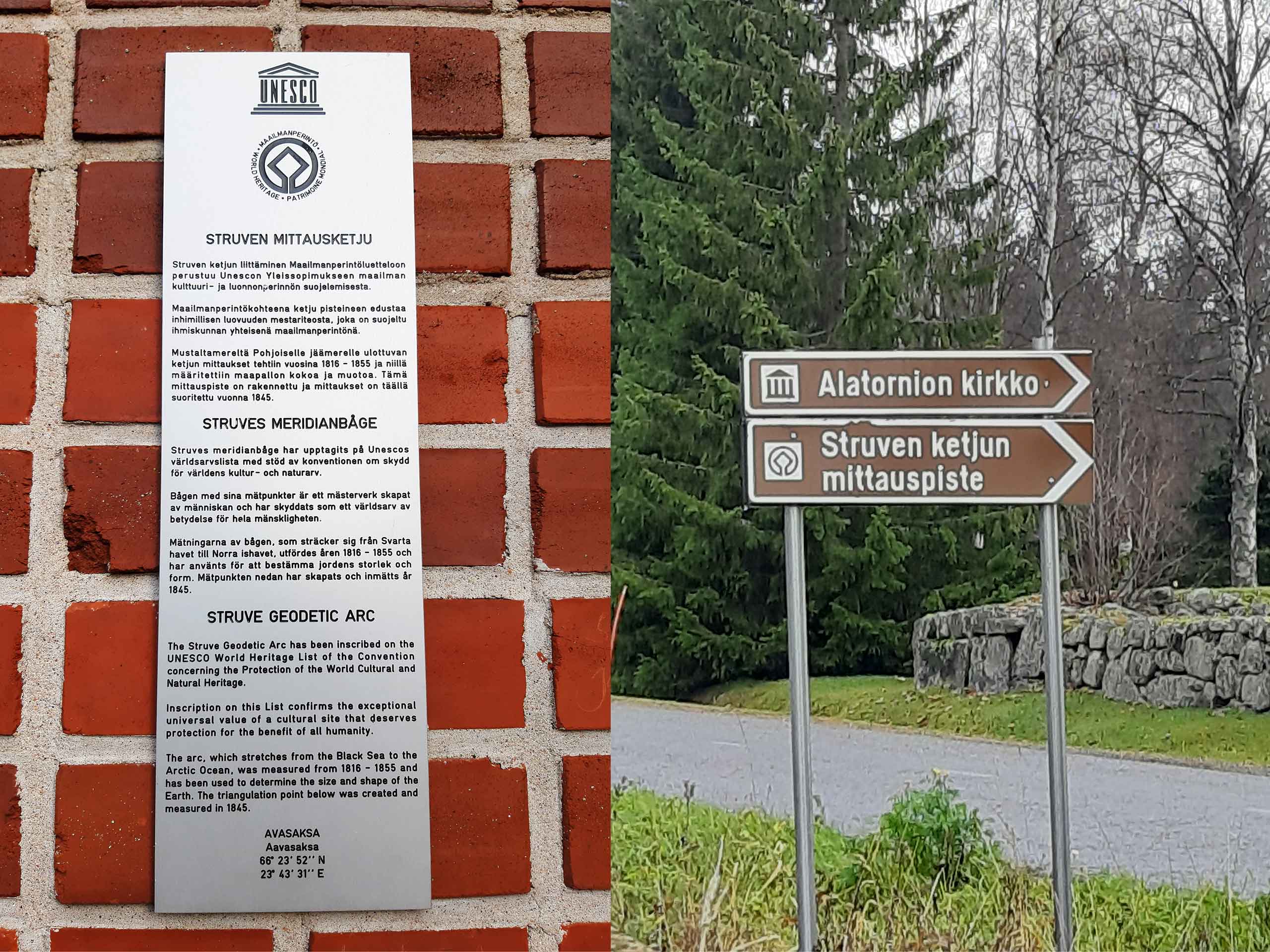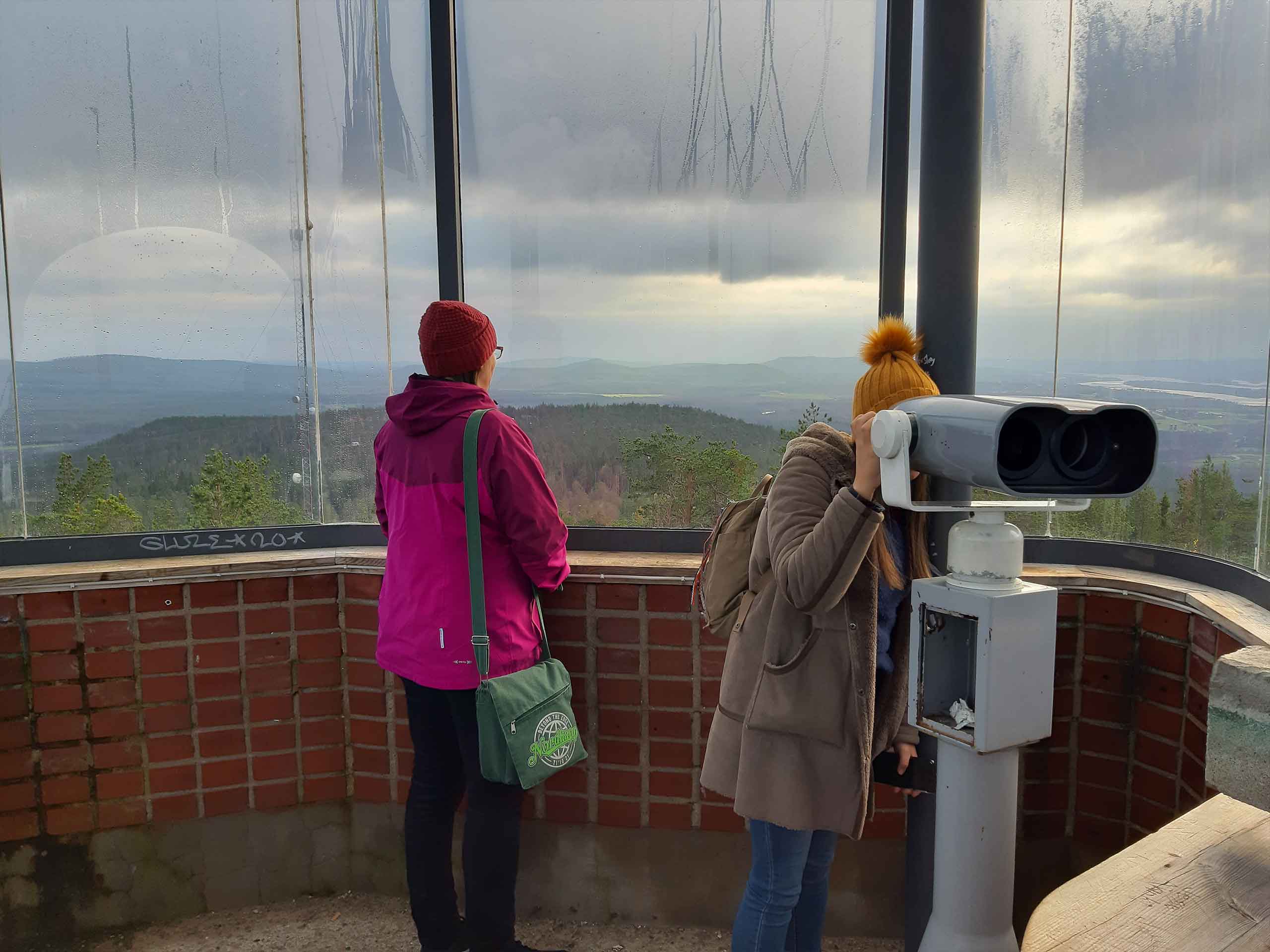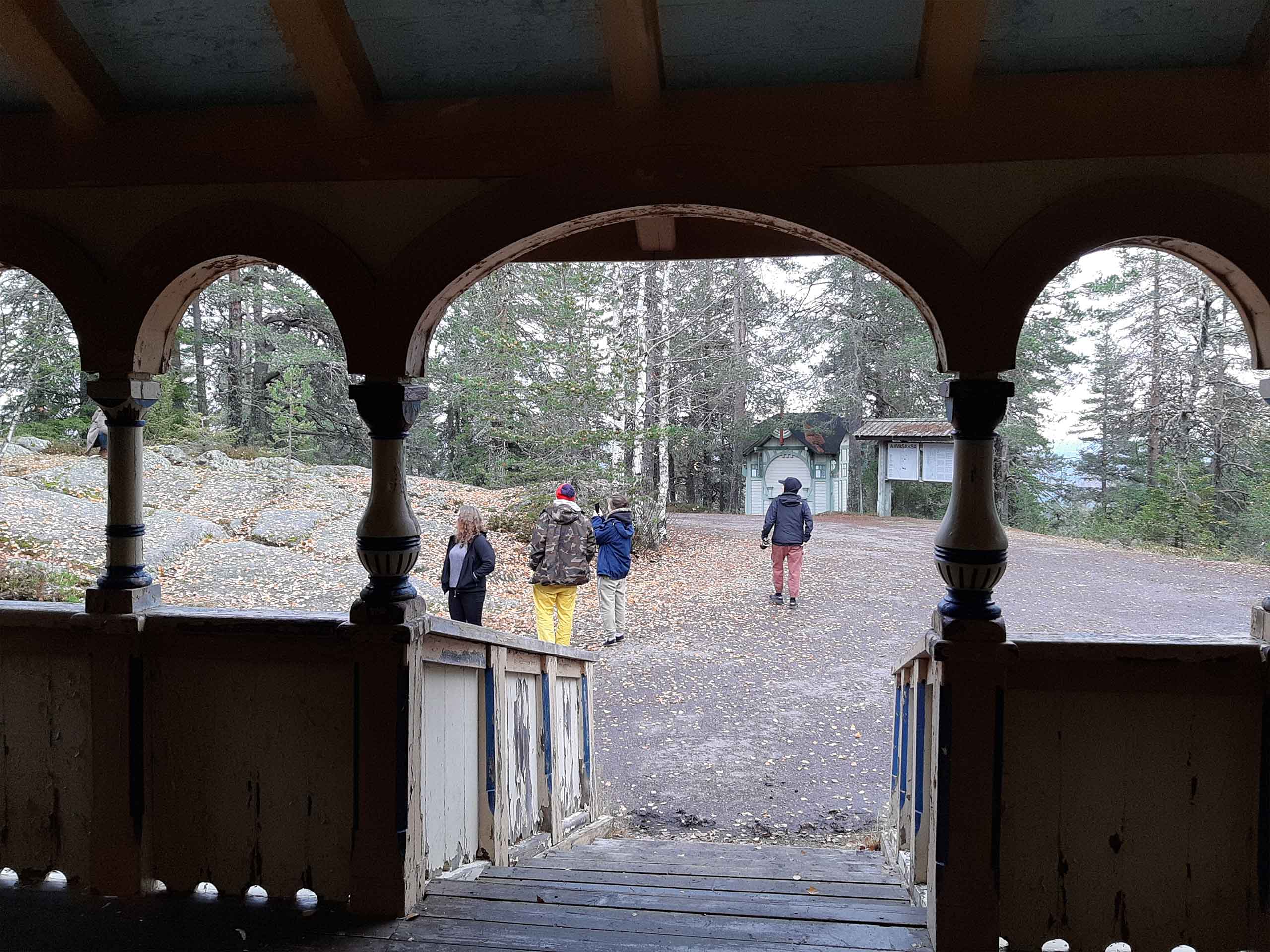By Teija Tekoniemi-Selkälä, Senior Lecturer, Multidimensional Tourism Institute, Lapland UAS
Background
The Northern parts of the World Heritage Struve Geodetic Arc Project and Lapland University of Applied Sciences (UAS) executed joint RDI integration together with seven 4th year tourism students and their mentoring teacher during autumn 2020.
The objective of the RDI integration was to suggest how to co-create holistic cultural heritage destination experiences, which bring added-value for a chosen target group during a chosen season in the Tornio Valley along the World Heritage Sites of Struve Geodetic Arc from Tornio to Aavasaksa.
Firstly, Lapland UAS students familiarised themselves with the Tornio Valley as a tourism destination and studied cultural heritage tourism and the Struve Geodetic Arc (SGA). Secondly, during the FAM-trip to Tornio and Aavasaksa students executed a situational analysis on current visitor experiences based on their personal perceptions from the SGA attractions and sites in Tornio and Aavasaksa. As the result, atmosphere carriers (positive cues) and killers (negative cues) in the Tornio Valley were studied based on the SGA cultural heritage theme.
Situational Analysis on the Struve Geodetic Arc Themed Destination Experiences
It seems that even the local stakeholders have not been well aware of the gem of the cultural heritage in the Tornio Valley. Without comprehensive understanding of the significance of the Struve Geodetic Arc, there has been very limited activities so to promote it regionally. Even promotion of the SGA by Visit Finland has not been encouraging nor appealing. Therefore, the manifold project activities which are in progress to make the SGA theme and stories more known among the local stakeholders e.g. tourism information offices/visit organisations, tourism businesses and local people as well as visitors are more than necessary. As the result, the SGA theme will be considered as a significant cultural heritage resource for tourism industry and other related branches of trade in near future in the Tornio Valley.
Improving visitors´ pre-experience and visitor guiding´, it is necessary that the key message of the Tornio Valley is unified and appealing and dissemination is executed through different channels by utilising various tools. The tourism information of the Tornio Valley is expected to be easily accessible. Text signposts and/or road signs or other visitor guiding tools should be available in relevant places and easy to understand in various languages, minimum three languages Finnish, Swedish and English. In addition, tourism information and the content need to be presented consistently and professionally. There is a call for a collective decision among the municipalities and tourism businesses and other relevant stakeholders in the Tornio Valley, how tourism industry is branded and marketed together.

Examples of the Struve Geodetic Arc related signage in the Tornio Valley. @Tekoniemi-Selkälä 2020.
Developing visitors´ on-site experiences, it is necessary that the unique location and the incomparable beauty of the Tornio Valley are utilized to the fullest in order to promote the SGA. At the same time, the SGA measurement points should be made known and accessible as well as the maintenance of the SGA measurement points is settled. The key attractions and activities of the SGA cannot solely create cultural heritage destination on-site experiences, but so-called supporting products and service offerings are vital, even in a limited scale, to comprise holistic destination experiences in the Tornio Valley. The supporting services usually secure the visitors´ wellbeing and feel good elements during their stay e.g. catering and rest facilities, toilets, proper and waiting areas with weather protection. In addition to visitors´ basic physiological needs, their security and social needs have to be considered in the development process, too. When developing products, services and experiences specific attention needs to be given in engaging senses and in increasing the level of visitor involvement. Not to forget how convivial atmosphere encourage visitors to share their experiences which does have a positive impact on their wellbeing.

Scenery watching from the Tower in Aavasaksa. @Tekoniemi-Selkälä 2020.
The opportunities and challenges of sustainability and responsibility of the SGA based destination experiences are closely linked to how local stakeholders strive for conserving natural heritage and biodiversity as well as the built and living cultural heritage and traditional values of the Tornio Valley. In addition, enhancing respect towards the socio-cultural authenticity of host communities and contributing to intercultural understanding and tolerance are important perspectives to consider when planning and executing activities to improve sustainability and responsibility. Learning from local best practices has been proven to be an efficient development tool.

View from the Imperial Cottage in Aavasaksa. @Tekoniemi-Selkälä 2020.
Conclusions
Common features for competitive destinations are location, easy accessibility, versatile infrastructure, cultural resources, attractive product and service offerings, ICT readiness as well as high-quality customer experiences, and local community support (Bornhorst, Ritchie & Sheehan 2010, 572; Salinas Fernández et al. 2020, 2).
The Tornio Valley has most of the features a competitive destination is made of. The Tornio Valley is a very unique borderless tourism destination along the Tornionjoki River. In addition to the particular location, the Tornio Valley has specific cross-border culture and communities as well as extraordinary cultural heritage due to explorers who have made the region renowned since second half of the 18th century. (Travel Pello 2020.) The nearest airport is in Kemi (Finnavia 2020), however, the most convenient way of travelling along the Tornio Valley is by car. There can be found versatile but still limited offering of attractive and high-quality products, services and experiences.
A Destination Management/Marketing Organisation´s (DMO´s) main role is to mobilize and deploy the core resources and attractions. In addition, DMO coordinates strategic planning, destination branding and marketing as well as service and experience design in order to enhance the competitiveness of a destination. (see UNWTO 2007; Richie & Crouch 2003.)
There is no common tourism brand nor marketing for the Tornio Valley nor a joint DMO which would coordinate and manage tourism industry in the region. Therefore, it is challenging to share the uniqueness of the Tornio Valley and differentiate it from the other destinations. Potential visitors may find it challenging and time-consuming to create a unified perception of the Tornio Valley due to the lack of a common brand and difficulties in finding relevant information for travelling.
The results of the SGA related situational analysis of the atmosphere carriers and killers in the Tornio Valley shows that there is notable potential for developing cultural heritage tourism based on the Struve Geodetic Arc. There is room for manifold development to bring to light the Tornio Valley as an exclusive cross-border destination with incomparable beauty and exclusive cultural heritage. However, it requires extensive cross-border cooperation and public-private partnerships which need to overcome the most probable obstacles related to legislation, cultural issues, business skills and practices as well as trust.
The responsibility of carrying out the very first steps of this ambitious task has been granted to the Northern parts of the World Heritage Struve Geodetic Arc Project.
Bibliography
Bornhorst, T., Ritchie J. R. B. & Sheehan, L. 2010. Determinants of Tourism Success for DMOs & Destinations: An Empirical Examination of Stakeholders’ Perspectives. Tourism Management 31, 572–589.
Finnavia 2020. Accessed 11 Dec 2020 https://www.finavia.fi/en/airports/kemi-tornio.
Richie, J. R. B. & Crouch, I. G. 2003. The Competitive Destination – A Sustainable Tourism Perspective. PUBLISHER’S LOCATION: CABI Publishing.
Tekoniemi-Selkälä, T. 2020. Pictures in the Blog.
Travel Pello 2020. Welcome to Pello in Finish Lapland. Accessed 18 September 2020 https://travelpello.fi/en/.
UNWTO 2007. A Practical Guide to Tourism Destination Management. Accessed 4 December 2020 https://www.unwto.org/global/publication/practical-guide-tourism-destination-management.




